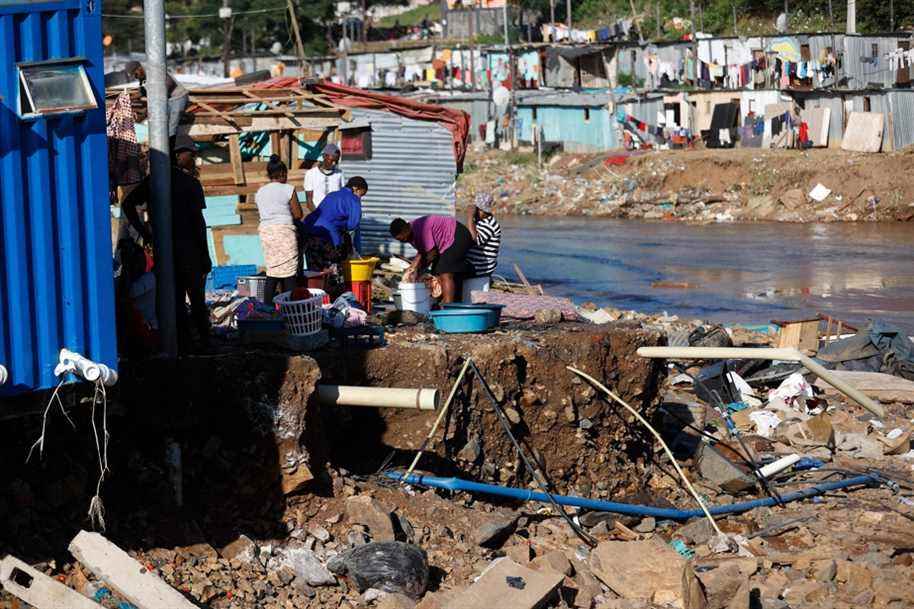(Durban) The catastrophic floods in South Africa killed 341 people and affected nearly 41,000 people, according to a report which was further increased Thursday evening, the lines to deposit bodies lengthening in front of the morgues.
Posted at 12:25 p.m.
Updated at 12:56 p.m.
Most of the victims were recorded in the Durban region, a major African port in Kwazulu-Natal province (KZN, east) and epicenter of the bad weather that began last weekend. A state of disaster has been declared.
“A total number of 40,723 people have been affected. Unfortunately, 341 deaths have been recorded,” provincial minister Sihle Zikalala told a press conference.
Men and women drowned, children and babies died buried in landslides. More than 100 bodies were deposited last night at the Phoenix morgue, on the outskirts of Durban.
“It’s too much,” said one of the employees who wished to remain anonymous. He described lines of families coming to bring their dead. Burials have been banned until the waterlogged ground stabilizes.
The rains, which reached levels not seen for more than 60 years, washed away bridges, roads and isolated a large part of the region bordering the Indian Ocean. More than 250 schools have been affected, thousands of homes destroyed.
Around 20 emergency shelters have been opened, welcoming more than 2,100 homeless people, according to the authorities.
Waiting to be rescued, thousands of survivors felt left to fend for themselves. “There is no one here who can help us,” said Thobele Sikhephen, 35, in front of his mud-filled sheet metal house in a township.
Sporadic protests have broken out calling for help. The city of Durban called in a press release “for patience”, the relief operations being slowed down “due to the extent of the damage on the roads”.
Cleared with diggers, some axes have been reopened, but most roads are still inaccessible, strewn with debris or drowned in brownish water.
The authorities have asked people to avoid all contact with this potentially “contaminated” water as much as possible.
Four days
In the township of Amaoti, north of Durban, where most homes are made of corrugated iron sheets or wooden planks, clusters of people filled buckets with clean water drawn from exposed pipes after the collapse of a gigantic stretch of road.
In some areas, water and electricity have been cut for four days and everything is missing.
Local authorities have appealed for donations of non-perishable food items, water bottles and anything else that could keep you warm.
Further looting has been reported. CCTV footage shared on social media showed people snatching up goods from supermarket shelves.
At the port, cranes have put in order the huge metal containers tossed the day before by the rains onto the highway.
The region has already seen massive destruction in July during an unprecedented wave of rioting and looting.
The forecast announces thunderstorms and the risk of localized flooding for the Easter weekend. These new bad weather should also affect the neighboring provinces of the Free State (center) and the Eastern Cape (southeast).
The authorities spoke of “one of the worst storms in the country’s history”. President Cyril Ramaphosa lamented “a catastrophe of enormous proportions”.
Some southern African countries are regularly plagued by deadly storms during the hurricane season from November to April. But South Africa is generally spared by these extreme climatic events.
